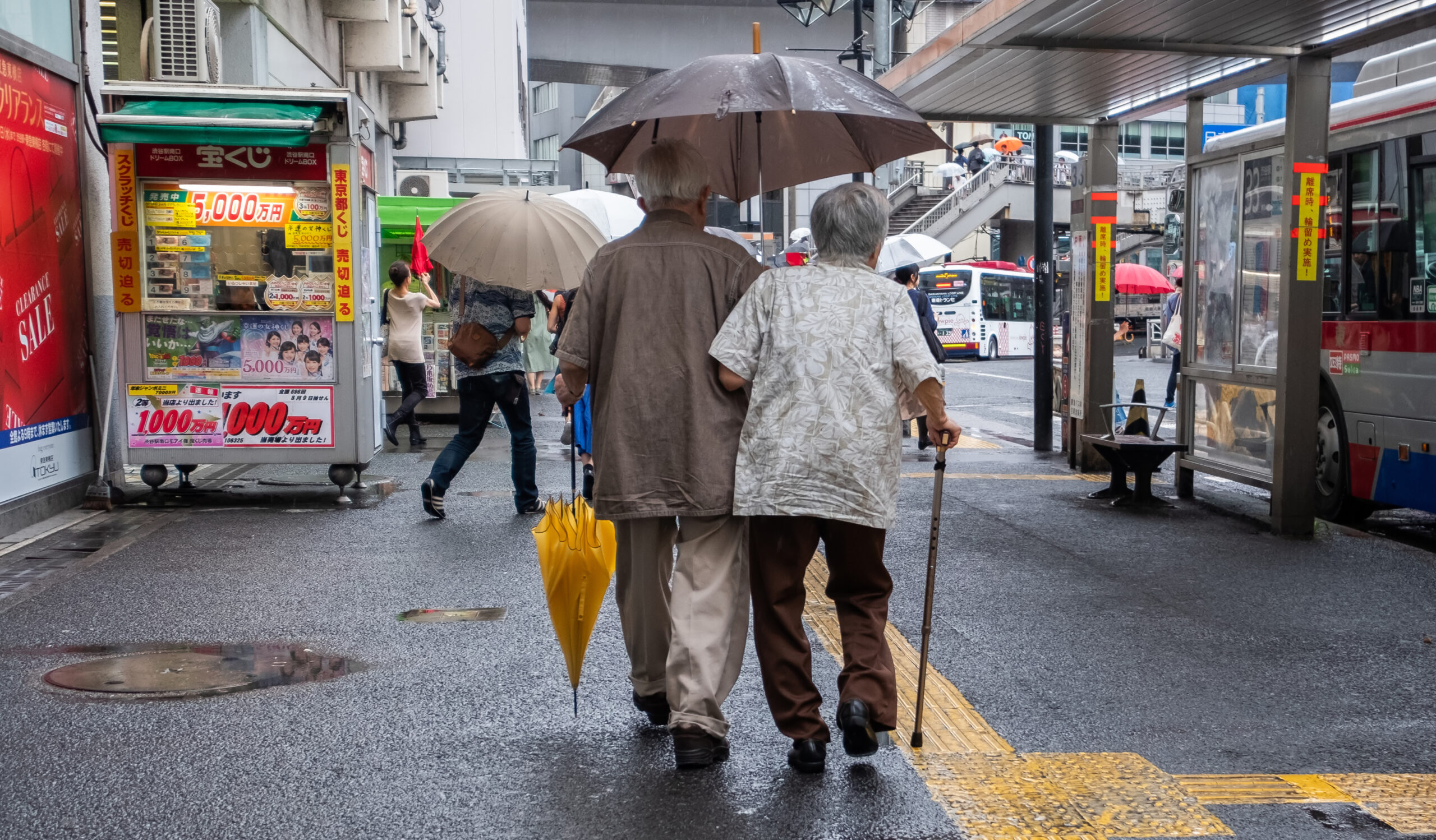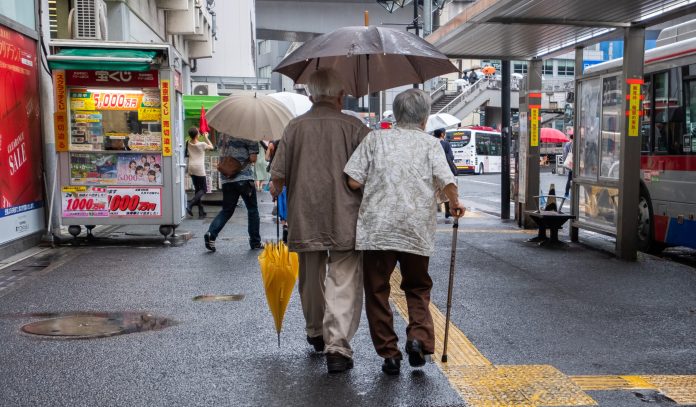
Japan 2025 is a version of Japan 2000—albeit with fewer young people, many more old people, and a society that has no idea where it is going. Japan simply runs in place, waiting to see what might evolve next. Change comes slowly here, but eventually enough will accumulate to bite you in the oshiri. You want it to happen so badly, to be the future, but Japan stubbornly refuses to accept the assignment.
None of that is visible at first or even second glance in a place like Tokyo. The trains run frighteningly on time, down to the second. The airport ticket machines are still overly complex but accept 10,000 yen notes (about $63) casually in a country where many people outside the big cities still conduct life almost entirely in cash. But Apple Pay from your American smartphone? Maybe not so much. The ticket machines do have an “English” button that removes some but not all of the mystery; if this is insufficiently clarifying, an attendant is nearby at the airport station to remove more, but still not all, of the mystery.
In the news, you can’t miss what’s going on. Japan leads the world in per capita sales of adult diapers. Japan’s population is getting so old that one major diaper manufacturer is now making products only for adults, not for babies. Japan’s births dropped more than 5 percent in 2023, to their lowest level in centuries. Japan had more than twice as many deaths as births, leading to a natural population decline of over 800,000. There’s an article about the government asking schools and companies to schedule group excursions outside of peak season, because a labor shortage makes it impossible to serve everyone properly. Some of the blame falls on us, it says, the foreigners traveling to Japan to enjoy the weak yen—no matter that tourism is one of the few growing sectors nationwide, thanks to that cheap currency plus the lure of anime and manga. Plenty of that, no shortages there. Forget steel and Toyotas; Japan wants to double the number of foreign tourists over the next few years as a major industry.
But even if you’ve missed the news, signs of a labor shortage are not hard to spot. More and more of Japan’s famous convenience stores and supermarkets are nearly entirely vaguely supervised self-checkout now, taking advantage of the extreme honesty of the Japanese people. In smaller subway stations, there are no longer attendants to resolve problems. You’re on your own with the machines there alongside 124 million (and decreasing) Japanese.
One solution in play is promoting elderly employment. To address the labor shortage, Japan has been encouraging older people to remain in the workforce longer. The government raised the retirement age and is promoting “silver workers.” But many of these jobs appear to be makework rather than real responsibilities—ushers in a bank lobby to show patrons to a seat, human light poles to direct traffic around construction, that sort of thing. It feels like too little, especially as 20 percent of people over 65 live in poverty.
The country’s population peaked in 2008 and has since been steadily decreasing due to low birth rates and an aging society. In 2023, approximately 29 percent of Japan’s population was aged 65 or older, making it one of the oldest populations in the world. The proportion of elderly people is projected to rise even further, possibly reaching 40 percent by 2050 if current trends continue. This is coupled with a low birth rate—one of the lowest in the world. This is due to various factors, including social and economic pressures, high cost of living, delayed marriages, and changing attitudes toward family life. On the other end of the scale, Japan has one of the highest life expectancies globally, with an average at birth of around 82 for men, 87 for women.
At the residence of a Japanese friend in a Tokyo suburb, there’s a daily announcement at 5 p.m. asking everyone in the massive Eastern European–style block apartment complex to look for the handful of Alzheimer’s-afflicted residents who have wandered off during the day. This is treated as if it has always been the case. People look out their windows, and moms at the playground are especially alert, as many of the old people like to gather there to watch the children. It would make you cry if you let it, but no one in Japan lets it.
With a rapidly growing elderly population, Japan has seen an increasing demand for caregiving services. The burden is often placed on family members, particularly women, taking them out of the workforce. The government has been trying to address this with various reforms, including allowing more foreign caregivers to work in Japan, but talk is talk. These improvements feature more on Sunday morning political talk shows than on the street (or on the playground) where they are needed.
Subscribe Today
Get daily emails in your inbox
It can be hard to sort out, this modern Japan. It is so clean, everywhere. Crime only exists in the most organized fashion and rarely touches the average person, at least one who shies away from loan sharks. If you drop something, someone will pick it up and try to return it to you. There are few public trash cans because there is no one to empty them. People thus carry their daily trash of food wrappers and cigarette butts with them, until they get home if necessary. You could eat off the subway floor. (Contrast New York, where the homeless on the trains are immolated for kicks.) Even the growing homeless population gathered near Japanese train stations is quiet and neat, not wanting, it seems, to make a fuss or cause a disturbance. In nearly every such way Japan is a better, cleaner, and safer place than anywhere else in the world. It can be hard to look past such a miracle to criticize her.
And that’s what makes a visitor want to scream out loud, “You are almost there.” Just let in some immigrant nurses to care for the elderly and create a subsidized childcare system so mothers who want to work can. That would also encourage women to have children, alongside a national campaign to assure people working moms are a valuable part of the economy. But no one seems to be listening; the government’s current effort is to offer women only a measly sum of about the equivalent of $630 as an incentive to have children.
If Japan does not successfully address its demographic challenges, the country will face long-term economic stagnation, reduced productivity, and increased societal pressures. Japan’s advanced infrastructure and technological innovations may allow it to continue to mitigate some of the most severe impacts of its aging population and run in place for many more years. The popular culture version of this answer takes the form of robots, either in the form of a movie-like android walking awkwardly the classic Japanese femmebot receptionist. (No robots lifting an elderly woman out of the tub or changing a diaper on the TV.) Perhaps it’s all for the good, but Japan 2025 seems to have left too many questions unanswered to really know.

